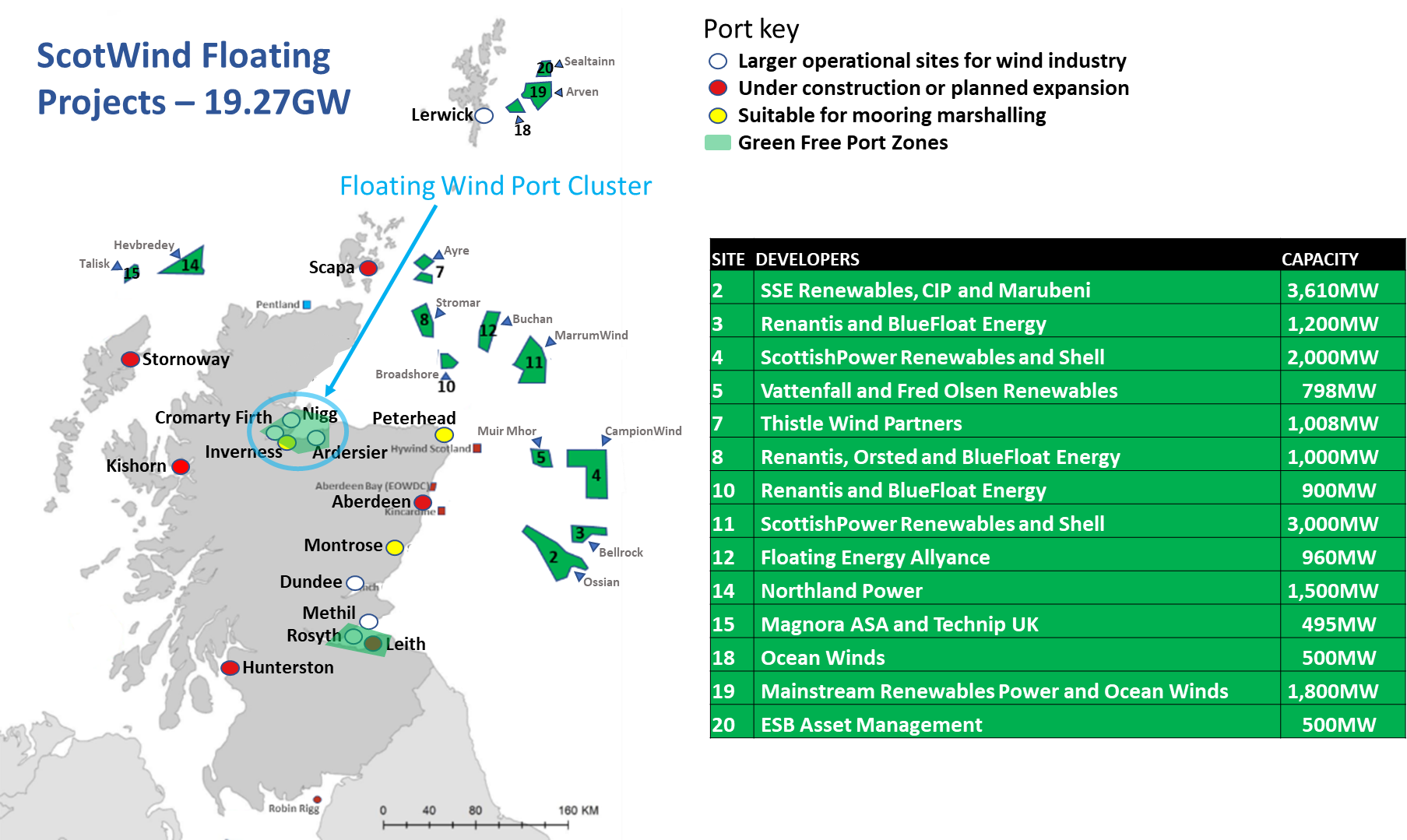Supply Chain Investment
Scotland now has one of the largest capacity pipelines for floating offshore wind projects in the world. The ScotWind leasing round has over 19GW of potential floating wind projects and the developers involved are targeting delivery of these projects between 2028-2033.
The opportunity to manufacture as many of the substructures as possible in Scotland for all of these future floating wind projects has resulted in significant effort on the part of the Scottish Government and its enterprise agencies to plan for how this could be achieved.
The Scottish Offshore Wind Energy Council has been instrumental in forging a developer Collaborative Framework which has resulted in the industry and Scottish Government coming together to investigate a private/public partnership solution to investing in the necessary infrastructure and supply chain manufacturing opportunities. This work has resulted in the Strategic Investment Model or SIM.
Strategic Investment Model (SIM)
The SIM sets out a mechanism for investment of the funds that the offshore wind developers and the public sector have set aside for direct investment into the supply chain, to stimulate manufacturing, and into related port infrastructure. The individual developers laid out these investment plans in their Supply Chain Development Statements which were part of Crown Estate Scotland's seabed leasing programme for ScotWind.
The SIM aims to lower the investment risk associated with building new supply chain manufacturing capacity for offshore wind in Scotland. This will be available to eligible domestic supply chain companies as well as inward investors looking to set up new manufacturing facilities in Scotland.
FLOWMIS
The Department for Energy Security and Net Zero's Floating Offshore Wind Manufacturing Investment Scheme (FLOWMIS) is a £160m competitive funding pot that opened to applications in 2023. It is aimed at assisting floating wind related port and manufacturing investments in the UK.
The Port of Cromarty Firth was successful in securing a £55m grant from FLOWMIS toward their £110m port expansion project which will increase both their laydown area and quayside length.
For more information on this FLOWMIS award use the link below to the relevant page on the DESNZ web site which details the grant to Port of Cromarty Firth on the 5th of March 2025.
FLOWMIS award press release on DESNZ site
The Manufacturing Opportunity
The 19.3GW of floating wind projects in the ScotWind round, along with the 5.4GW in the INTOG round, represent a huge manufacturing opportunity for major components such as substructures and for various subcomponents from the mooring and cable systems.
The map below shows the all of the floating wind projects in the ScotWind leasing round along with their proximity to Scottish ports. The ports are split into the larger sites capable of hosting turbine marshalling and substructure manufacture or assembly along with the ports more suitable to mooring and cable marshalling activity. The map also identifies the location of both the Floating Wind Port Cluster and the two Green Freeport Zones in Scotland in the Cromarty Firth and Firth of Forth areas.
The larger operational sites, and those with currently under construction or planned extensions, have been identified as ports capable of delivering substructure manufacturing facilities. Some of these ports have already been earmarked for concrete substructure manufacture.
Over 1,200 Substructures
If successful with their planning applications, the ScotWind and INTOG round projects will require over 1,200 floating substructures, assuming 20MW turbines, spread over a 5-6 year period from 2028-2033 (24,671MW/20MW = 1,233 units).
The Floating Wind Manufacturing HPO document, available to download using the link further down this page, also sets out the scale of the manufacturing capacity required to deliver the other components such as the thousands of anchors, dynamic cables, cable protection systems, buoyancy models and clump weights along with thousands of kilometres of mooring chain and ropes.
Companies interested in finding out more about these floating wind manufacturing opportunities in Scotland can contact us using the email enquires link below.
Floating Wind Manufacturing HPO enquiries






